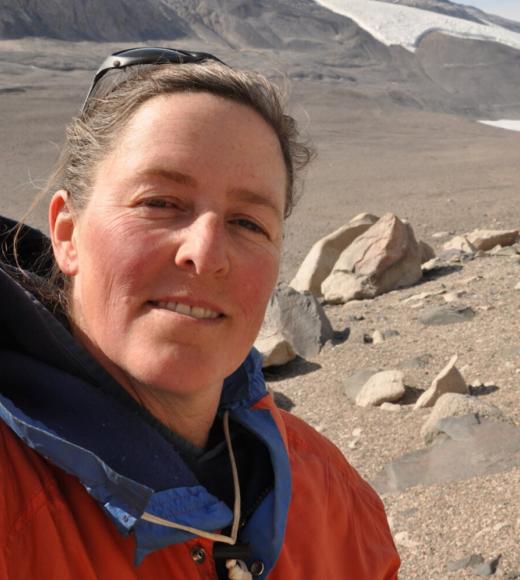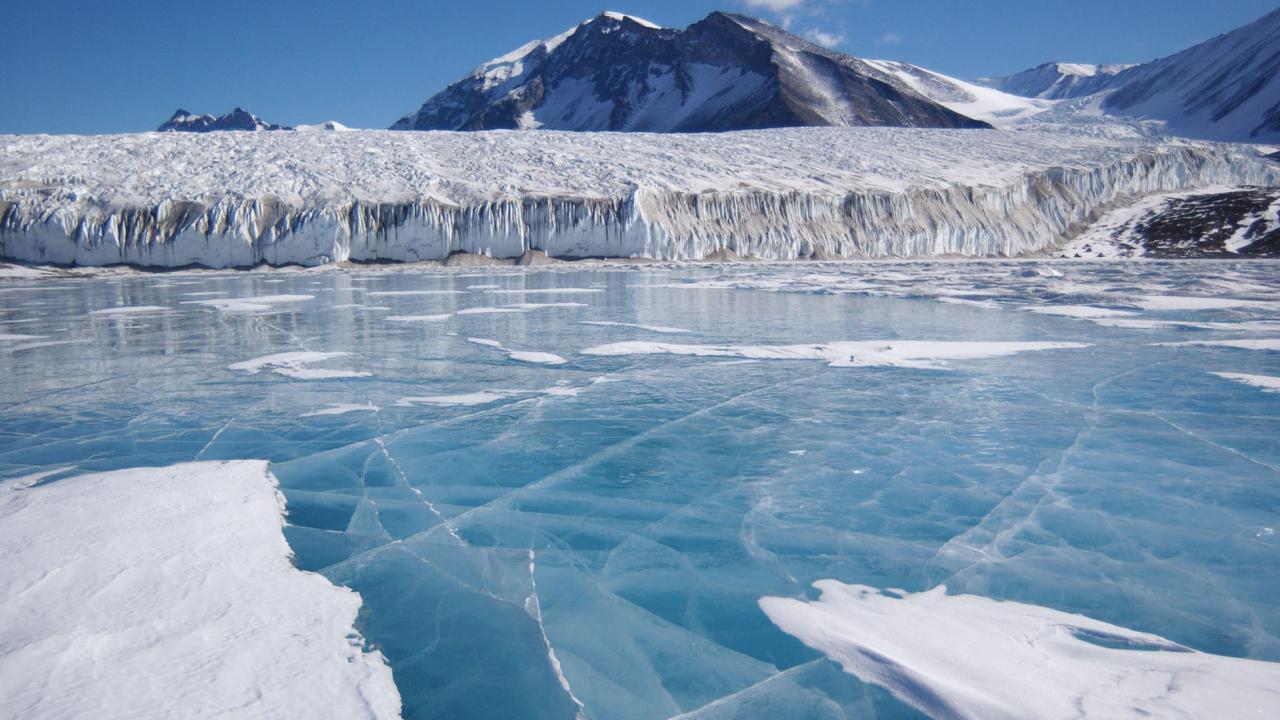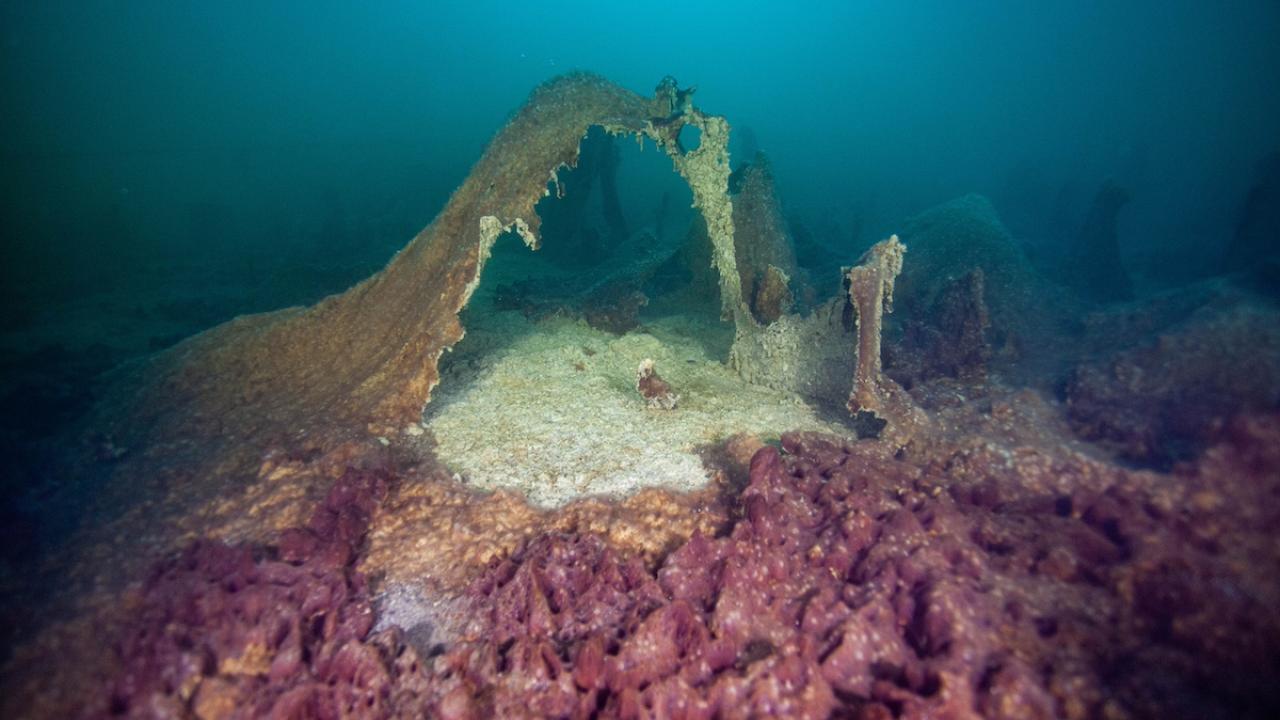
Studying Ancient Microbial Life on Earth and Beyond with Dawn Sumner
Take a deep breath in. Hold it in for a second. And now, let it out.
While that simple, measured way of breathing can instill calm in us, it also connects us to our home planet.
“That oxygen that you just absorbed comes from billions of years of evolution of photosystems and it’s the only way we can be here as humans today,” said Dawn Sumner, a professor in the Department of Earth and Planetary Sciences at UC Davis. “It provides us with energy to support our large bodies, our brains, all the work that we’re doing as a community.”
“Thinking about that breath, to me especially, connects us to 3.5 or 4 billion years of Earth history,” she added.
Over the course of the planet’s evolution, the chemical makeup of Earth has changed drastically. One key actor in this shift was cyanobacteria.
Unlike other microbial life, cyanobacteria developed the ability to extract electrons from water by harnessing light from the sun. As cyanobacteria soaked up sunlight, they produced oxygen, fundamentally changing ocean chemistry and the Earth’s atmosphere.

“Before that, we couldn’t have breathed the atmosphere,” said Sumner, who was recently elected as a fellow to the American Association for the Advancement of Science. “How did the evolution of photosynthesis in microbial communities lead to changing the entire surface of the Earth, which allows animals to be present, allows us to be present?”
For much of her career, Sumner has focused her research on reconstructing the ancient environments of early Earth to answer this question. While the arrow of time prevents direct access to primordial Earth, there are places on modern Earth that act as analogues. They’re places that allow researchers to observe the interactions between microbes and the environment without the influence of macroscopic organisms on the system.
And one of those places is Antarctica’s Lake Fryxell.
Antarctica’s Lake Fryxell
For many, it may not be obvious on the surface how a frozen lake in Antarctica can act as an analogue for ancient Earth. But peak beneath the icy surface of Lake Fryxell and it’s easier to understand.
In the upper part of Lake Fryxell’s water column oxygen is present, but go deeper and you find a world devoid of oxygen. And yet, microbial communities thrive, creating large mats that look like lasagna, arches and honeycombs, among other shapes. During the 24/7 darkness of winter, no photosynthesis occurs in the lake and thus no new oxygen is produced.
“What we can do is go to this lake and study what the microbial communities do in the dark winter, see how they start producing oxygen and how they transform the environment into one containing oxygen. This is a great field site because it presents the opportunity to study oxygenation of an environment at a very small level.” — Dawn Sumner
Such fieldwork is informing Sumner’s theoretical work on a model she calls the "Gradual Oxygenation of Environments." The model aims to refine our understanding of the oxygenation of Earth — what is referred to by some in the field as the Great Oxidation Event (GOE) — by focusing on the interactions and interdependencies between microbial organisms and their respective environments, rather than a single causal event.
“I’m in the process of writing a suite of papers arguing that the GOE is really the gradual oxygenation of some environments,” Sumner said.

Life under the ice
Sumner has spent seven field seasons conducting research in Antarctica, including three at Lake Fryxell. To gain access to its waters, she and her collaborators melt a hole in the ice’s surface, the thickness of which can be the height of a room.
The researchers, some of whom are also specially trained divers, then install instrumentation, take measurements and collect samples from the lake. Genomic analyses, water chemistry analyses and dissections of microbial mats occur in the lab after the fact.
“We have this really nice interdisciplinary collaboration with people who study different aspects of the water chemistry and microbial mats. Answering these questions requires the contributions from a whole suite of people with different skills and interests and questions, and they really make it an exciting project.” — Dawn Sumner
During a recent four-week field season, Sumner and her research colleagues installed experimental systems that will allow them to monitor Lake Fryxell’s oxygen levels as sunlight disappears in winter. While the research is foundational, its potential benefits could impact society in big yet unforeseeable ways.
“We’re collecting dozens of samples that will be sequenced for their genomes, which will become public data,” Sumner said. “A lot of biotechnology is mining information from genomes to look for new compounds that can solve various problems and may feed into some medical solutions.”

A fascination with the unknown
Being on the precipice of the unknown, uncovering new founts of knowledge, is why research excites Sumner.
A lifelong lover of the outdoors and geology, Sumner found herself first drawn to questions about ancient Earth during her undergraduate days at the California Institute of Technology. At CalTech, she analyzed magnetic signatures in rocks to better understand the history of the oxidation of iron on Earth, which provides clues about the planet’s oxygenation history.
“I had all these outdoor and observation skills and the fact that I could actually reconstruct the history of Earth by applying those in a scientific way was definitely the experience that made me think, ‘I could really enjoy doing this for the rest of my life,’” she said.
Sumner further honed her research interest while pursuing a doctoral degree in geology at the Massachusetts Institute of Technology. She’d look for clues to the past in carbonate rocks and microbial fossils from the Archaean Eon billions of years ago. This research concerning ancient microbial life eventually led to her involvement in the search for life and habitable places on Mars.
“NASA started a working group on how to integrate astrobiology science into Mars exploration and they asked me to be on that and I really enjoyed it,” said Sumner. “We spent about two years having community workshops, collecting feedback and setting science goals. The fundamental question from our point of view was, how do you search for something that might not exist in a scientifically rigorous way?”
That question informed Sumner’s work as a member of NASA’s Mars Science Laboratory. Her contributions informed how both the Curiosity and Perseverance rovers explore ancient rocks on the red planet.

From the extraterrestrial to the terrestrial
Unlike the rocks of Earth, space was an intangible for Sumner. Sure, she could inform mission questions and goals through her work with NASA, but she missed the boots on the ground nature of her geological work. She missed the field.
With research questions from her graduate days still percolating in her mind, Sumner pivoted back to the terrestrial.
Her interest in Antarctic lakes was spurred by a colleague who noted that Antarctic stromatolites — microbial fossils created by photosynthetic microorganisms — were similar to the Archean carbonates Sumner had previously studied. Because of this, Sumner saw the potential for the cyanobacteria inhabitants of Antarctic lakes to act as analogues for ancient Earth environments and microbes.
She’s been traveling to Antarctica ever since.
“What’s going on in Antarctic lakes is not exactly what happened on early Earth, but it will give us some idea of how those dynamics change when microbial communities first start producing oxygen and start that change in water chemistry. The work we are doing in Antarctica can’t be done elsewhere on Earth. It’s a very special place.” — Dawn Sumner
